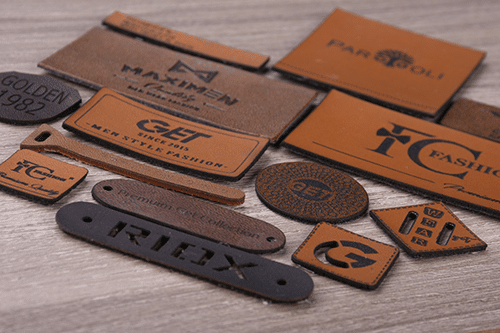Jacron is a sustainable, vegan cellulose leather replacement commonly utilized in the textile and clothing industries worldwide. It is frequently used to replace leather patches on jeans and other denim items. Jacron is a form of paper and a generic word for a fabric that resembles animal-derived leather in appearance. The dimensional stability of this animal-free alternative is well-known. In the textile business, jacron is commonly used in the same applications as genuine leather. Everything you need to know about Jacron is right here.
What is Jacron?
Jacron is a semi-synthetic raw cellulose material derived from pulpwood, a source of renewable supplies. It’s a one-of-a-kind paper that has a leather-like appearance. Jacron was invented in the 1980s initially to replace brand leather tags for jeans. It is a material that is cruel-free and has a comparable resistance to water and durability. The majority of jacron is obtained and manufactured responsibly. It’s commonly acknowledged as a suitable and vegan-friendly alternative to many leather-based items.
Textiles made with Jacron are used to manufacture apparel, shoes, purses, trimmings, and accessories, among other things. It found in various items such as handmade presents, toys, cases, home furniture, gadgets, packaging, and more. It’s simple to print and can hold a lot of information. Jacron paper embossed as well. It’s a high-quality substance with outstanding technological capabilities.
Jacron has become one of the most popular leather substitutes. Many textile producers and brands use Jacron paper to generate long-lasting, consistent, and high-quality goods. Jacron is frequently used to make fashionable leather-like patches for jeans, pants, shirts, shorts, jeans, blouses, dresses, jackets, and other garments. It’s a substance that may be used for a variety of purposes.
Advantages and disadvantages of Jacron
The following are some of the most significant advantages of utilizing Jacron:
- Easy to care for and wash
- Lightness
- Affordability
- Reusable
- Resistant to water
- Moisture-wicking fabric
- Quick-drying
- Longevity
- Exceptional tensile strength
- Tear resistance is high.
- Abrasion resistance is high.
- UV and sunlight resistance
The following are some of the most significant drawbacks of utilizing Jacron:
- Low elasticity
- Low breathability
- Low heat resistance
- Low chemical resistance
- Low absorbency
Sustainable fashion labels use Jacron
Jacron is a shining example of how the global textile industry addresses its devastating social and environmental consequences. Jacron is an animal-free replacement to leather that is one of the most environmentally friendly fabrics. That is why well-known brands are using Jacron material.
Best way to take care of Jacron
One of the most effective strategies to live more sustainably is to take good care of your clothes. Jacron is simple to clean and maintain. However, to ensure its life, avoid typical mistakes. It makes your garments last longer and allows you to wear them for more extended periods. It eliminates waste, pollution, and emissions while reducing demand for natural resources.
Washing:
It’s advisable to wash garments containing Jacron in low temperatures to save water, energy and maintain the quality of your clothing. You may wash them in the machine, but only at a temperature below 40 degrees Celsius. Use a mild detergent and keep the washing machine spinning at no more than 600 revolutions per minute.
Drying:
Hanging your things to dry is the most environmentally friendly option. Instead of using a dryer, hang them to dry in the open air. It maintains the quality of your clothing while saving a significant amount of electricity, carbon emissions, and money.
Ironing:
Iron your garments only when essential. Many garment fabrics are stretchy, wrinkle-resistant, and elastic. Select the lowest feasible temperature to prevent harm to textile fibres if you chose to erect a garment.


